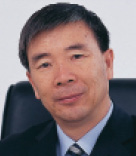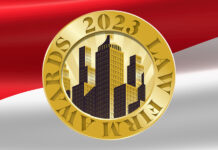With the state’s encouragement of the development of cultural industries, the game and animation industries have entered a stage of explosive growth, and among them, theme parks based on animation and game-based works have piqued the interest of numerous investors. However, due to defects in the grants of rights to animation/game-based theme parks, hidden problems of copyright infringement were created from the very start of construction.

Wang Yadong
润明律师事务所
执行合伙人
Executive Partner
Run Ming Law Office
Some examples: as reported by the media a certain park established a real-life interactive entertainment project based on the famous game Angry Birds, without having secured a licence from the game’s developers, Rovio Entertainment; a certain park erected and exhibited without authorisation a large sculpture strikingly similar to a Gundam character in Japanese animé, which ultimately was pulled down by the park itself after strong objections from the copyright holder; and an animation/game-based theme park established at a cost of RMB300 million (US$48 million) by a certain enterprise contained a number of buildings, sculptures, entertainment facilities, etc., the virtual originals of which can be found in the famous game World of Warcraft, all of which was done without the park securing the permission of the copyright holder.
Works protected by the PRC’s Copyright Law must simultaneously satisfy the substantive essential condition of “originality” and the formal essential condition of being a category of work falling within the scope specified by the Copyright Law (e.g. as specified in article 3 of the current Copyright Law).
On the whole, animation works can be classified as artistic works, cinematographic works or works created using a method similar to that for shooting motion pictures (AV works); and electronic games can normally be deemed computer software.
Additionally, animations and games are commonly multifaceted works that organically combine numerous elements, with certain of their individual elements also potentially constituting independent works under the Copyright Law, e.g. artistic works (storyboards), musical works (background music and theme song) and literary works (script). Furthermore, the animation and game-based derivative products that commonly exist may also resolve into works, for example model works, architectural works and AV works (video advertisements, and expansion packs). On the whole, it is difficult to classify animation/game-based theme parks as a certain category of works under the Copyright Law.

Zhang Jing
润明律师事务所
资深律师
Senior Lawyer
Run Ming Law Office
When making a preliminary determination as to whether an animation/game-based theme park infringes copyright, it is not appropriate to simply make a broad comparison between the theme park as a whole and the animation/game work, but rather focus needs to be placed on the individual component parts of the theme park (buildings, sculptures, entertainment and facilities) and detailed elements (the pictures, text, music and video used in the park). On the one hand, with respect to the animation/game work that may have been infringed, the copyright holder has to figure out which works exist, for the purposes of the Copyright Law, from the perspectives of both the whole and the independent parts, and determine which copyright rights it enjoys in those works; and if it has carried out copyright registration, this can serve as preliminary evidence of ownership.
Close comparison
On the other hand, a one-to-one comparison of the alleged infringing components and detailed elements of the animation/game-based theme park with the works that have been determined needs to be carried out to come to a preliminary determination as to whether there is substantive similarity. Normally consideration can be given to: first, whether the buildings, sculptures, facilities and signs (e.g. signboards) in the theme park infringe the copyrights in the animation/game-related artistic works, models, buildings, computer software and other such works; second, whether the music, films or videos used in the theme park infringe the copyrights in the animation/game-related musical works, AV works, computer software and other such works; third, whether the use by the theme park of proper nouns or expressions appearing in the animation/game, the parades or performances put on by the park, the clothing or costumes of the working personnel infringe the copyrights in the animation/game-related literary works, artistic works, computer software and other such works; and fourth, with respect to the animation/game-based derivative products sold at the theme park, a preliminary determination as to whether their production has been lawfully authorised, as well as whether they run counter to the copyright holder’s commercial arrangements for sales, has to be made. Furthermore, with respect to the recreational facilities established in the theme park, attention should be paid as to whether there is improper use of electronic games.
Dispute resolution
In past practice of resolving copyright disputes relating to theme parks, copyright holders generally first opted to talk with the alleged infringer and demand that it cease the infringement, or to lodge a complaint with the relevant administrative authority, either themselves or through their lawyers. Before entering into contact with an alleged infringer, it is best for the copyright holder to gather and solidify preliminary evidence of the infringement. In administrative complaints, the relevant authority will usually require the complainant to submit preliminary evidence of the infringement; generally speaking, famous works that are widely known by the public and have a broad scope of transmission are best. Of course, a copyright holder may also opt to institute a copyright infringement action and, depending on the circumstances, launch an unfair competition action to secure the greatest protection.
Given that investments in theme parks are generally quite large, and considering the issue of balancing costs and benefits, removal is not necessarily the best means of putting a stop to the infringement of a copyright. In practice, copyright holders have taken different approaches to dealing with theme parks constructed and operated without authorisation, with certain copyright holders being more interested in seeking co-operation within a legal framework than having the pursuit of liability for infringement as their ultimate goal. Where practicable, the way for a win-win resolution may be for the theme park to pay the copyright holder a licensing fee, and operate the theme park and carry on related business activities within the scope permitted by the copyright holder, with the parties splitting the benefits as specified in their agreement.
Wang Yadong is the executive partner and Zhang Jing is a senior lawyer at Run Ming Law Firm
中国北京市朝阳区建国门外大街甲12号
新华保险大厦1806室
邮编:100022
Suite 1806, NCI Tower
12A Jianguomenwai Avenue
Chaoyang District, Beijing 100022, China
电话 Tel: +8610 65693511
传真 Fax: +8610 65693512/13
www.runminglaw.com
电子信箱 E-mail:
wangyd@runminglaw.com
zhangj@runminglaw.com






















